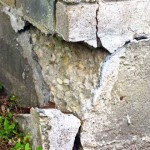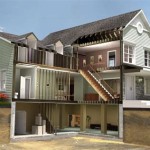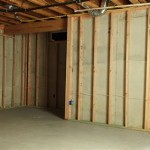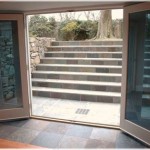Sump Pump Ideas For Basement Flood Prevention
Basement flooding poses a significant threat to property owners, potentially causing extensive damage, health hazards, and financial burdens. The installation of a sump pump system serves as a primary defense against water accumulation in basements, offering a reliable method of water removal and discharge. Effective planning and execution in sump pump selection, installation, and maintenance are crucial for safeguarding a basement from the detrimental effects of groundwater intrusion and surface water runoff.
A sump pump is a device designed to remove water that has accumulated in a sump pit, typically located at the lowest point of a basement or crawlspace. The primary function of a sump pump is to prevent flooding by automatically pumping water away from the foundation of a building. These pumps are activated by a float switch or pressure sensor, which detects the rising water level in the sump pit. Upon activation, the pump discharges the water through a pipe leading away from the building foundation, typically to a designated drainage area, storm sewer, or dry well.
The effectiveness of a sump pump system hinges on several factors, including the type of pump, its capacity, the proper installation of the sump pit and discharge piping, and regular maintenance. Different types of pumps are available, each suited to specific applications and water conditions. Submersible pumps, pedestal pumps, and battery backup pumps are all common choices, each offering distinct advantages and disadvantages. Understanding the specific needs of a basement and the local hydrological conditions is essential for selecting the appropriate sump pump system.
Choosing the Right Type of Sump Pump
The selection of a sump pump should be guided by several considerations, including the frequency of water intrusion, the volume of water to be pumped, the depth of the sump pit, and the available power supply. Two primary types of sump pumps exist: submersible pumps and pedestal pumps.
Submersible pumps are designed to be fully submerged in the sump pit. These pumps are typically more powerful and quieter than pedestal pumps. They are also less prone to clogging due to the positioning of the intake near the bottom of the pit. Submersible pumps are encased in waterproof housings and are therefore suitable for environments with high water levels. The impeller, which is the rotating component that moves water through the pump, is generally more robust in submersible models, allowing them to handle solids and debris more effectively. However, submersible pumps are generally more expensive than pedestal pumps and can be more difficult to access for maintenance or repairs.
Pedestal pumps, on the other hand, are mounted above the sump pit, with only the intake pipe extending into the water. These pumps are generally less expensive and easier to maintain than submersible pumps. The motor is located above the water level, reducing the risk of electrical hazards and facilitating easier access for repairs. However, pedestal pumps are typically less powerful and noisier than submersible pumps. They are also more susceptible to clogging, as the intake pipe can become obstructed by debris. Pedestal pumps are best suited for situations where water intrusion is infrequent and the volume of water to be pumped is relatively low.
Another crucial consideration is the presence of a battery backup system. In the event of a power outage, a battery backup sump pump can provide crucial protection against flooding. These systems typically consist of a separate pump powered by a deep-cycle marine battery. When the primary pump fails or loses power, the battery backup pump automatically activates, pumping water out of the sump pit until power is restored or the battery is depleted. Battery backup systems are particularly important for homes located in areas prone to power outages or where flooding can occur rapidly.
The horsepower rating of a sump pump indicates its pumping capacity. A higher horsepower rating generally translates to a greater pumping capacity, enabling the pump to remove water more quickly and efficiently. The appropriate horsepower rating depends on the size of the basement, the frequency of water intrusion, and the local hydrological conditions. For basements with frequent water problems or larger surface areas, a sump pump with a higher horsepower rating is generally recommended. Consulting with a plumbing professional can help determine the optimal horsepower rating for a specific situation.
Proper Sump Pump Installation and Placement
The effectiveness of a sump pump system is heavily dependent on proper installation. This encompasses the correct placement of the sump pit, the installation of the discharge piping, and the electrical wiring. A properly installed sump pump system ensures efficient water removal and minimizes the risk of malfunctions.
The sump pit should be located at the lowest point of the basement, typically in an area where water tends to accumulate. The pit should be large enough to accommodate the sump pump and allow for sufficient water accumulation before the pump activates. The depth of the pit should be determined by the type of pump used and the expected water flow. A pit that is too shallow may cause the pump to cycle on and off frequently, leading to premature wear and tear. A pit that is too deep may not allow the pump to fully remove the water, leaving a residual amount that can contribute to moisture problems.
The discharge piping should be installed in a manner that directs water away from the foundation of the building. The piping should have a slight downward slope to facilitate gravity drainage. It is also important to ensure that the discharge pipe is not obstructed or frozen, as this can cause the pump to back up and potentially flood the basement. Using a backwater valve in the discharge line can prevent water from flowing back into the sump pit from the discharge point. This is crucial in areas with high water tables or where the discharge point is lower than the sump pit.
Electrical wiring should be performed by a qualified electrician in accordance with local building codes. The sump pump should be connected to a dedicated GFCI (Ground Fault Circuit Interrupter) outlet to protect against electrical shocks. It is also advisable to install a high-water alarm that will sound in the event of a pump failure or excessive water accumulation. This alarm can provide an early warning of potential flooding, allowing homeowners to take corrective action before significant damage occurs.
Ensuring the discharge pipe's termination point is properly situated is critical. The water should discharge at least 10 feet away from the foundation. Directing water back towards the foundation creates a perpetual cycle of water intrusion and defeats the purpose of the sump pump. Local regulations may specify acceptable discharge locations, such as storm sewers or designated drainage areas.
Maintaining Sump Pump System for Longevity
Regular maintenance is essential for ensuring the reliable operation and longevity of a sump pump system. This includes periodic inspection of the pump, cleaning of the sump pit, and testing of the pump's functionality. A well-maintained sump pump system can provide years of reliable protection against basement flooding.
The sump pump should be inspected at least twice a year, typically in the spring and fall. During the inspection, the pump should be checked for any signs of damage, such as cracks, leaks, or corrosion. The impeller should be checked for obstructions, and the float switch or pressure sensor should be tested to ensure that it is functioning properly. Any debris or sediment that has accumulated in the sump pit should be removed to prevent clogs. A simple way to test the pump's functionality is to manually add water to the sump pit and observe whether the pump activates and effectively removes the water.
Cleaning the sump pit is an important part of sump pump maintenance. Over time, sediment, debris, and mineral deposits can accumulate in the pit, reducing the pump's efficiency and potentially causing it to malfunction. The pit should be cleaned at least once a year, or more frequently if it tends to accumulate debris quickly. To clean the pit, first, disconnect the pump from the power supply. Then, use a wet/dry vacuum to remove any standing water and debris from the pit. Scrub the sides and bottom of the pit with a brush to remove any stubborn deposits. Once the pit is clean, reinstall the pump and reconnect it to the power supply.
Regularly testing the pump's operation is essential. This involves pouring water into the sump pit to activate the pump. Observe the pump's performance to ensure it's effectively removing water and that the float switch is functioning correctly. If the pump is not activating or if it's making unusual noises, it may indicate a problem that requires professional attention. Additionally, test the battery backup system (if applicable) to confirm it's functioning correctly and that the battery is adequately charged. Replacing the battery every few years ensures its reliability in case of a power outage.
Preventive maintenance also includes inspecting the discharge pipe for obstructions or damage. Ensure the pipe is free of kinks, cracks, or blockages that could impede water flow. Check the discharge point to ensure water is flowing away from the foundation. Clearing any debris or vegetation that could obstruct the discharge point is crucial. In colder climates, consider insulating the discharge pipe to prevent freezing, which can damage the pipe and render the pump ineffective.
By implementing these sump pump ideas for basement flood prevention, homeowners can mitigate the risks associated with water intrusion and protect their property from costly damage. Regular maintenance, proper installation, and the selection of the right type of pump are essential components of an effective basement flood prevention strategy.

Choosing The Right Sump Pump For Your Basement City Wide Group

Sump Pumps Pits In Connecticut Residential Resq

Sump Pits Introductory Guide Water Commander

Drainage Sump Pump Installation In The Chicagoland

Sump Pump Options Fine Homebuilding

Clever Sump Pump Cover Ideas Basements Plus

How To Hide Your Sump Pump Hole

Sump Pump Reviews Comparing Systems

Home Sump Pump Systems In Connecticut Models Stamford Norwalk West Hartford Ct

Top Three Sump Pump Mistakes To Avoid Waterwork Plumbing







